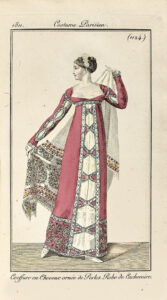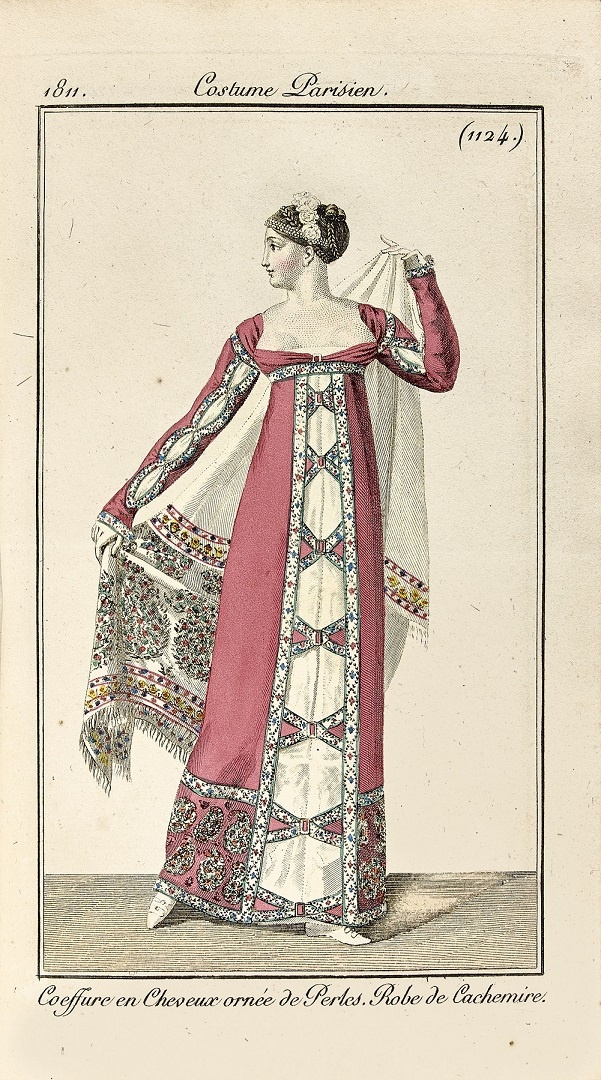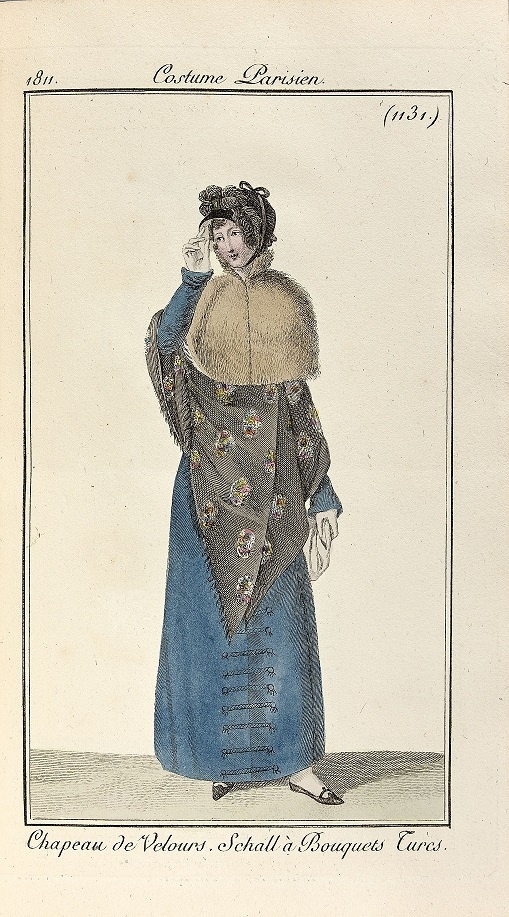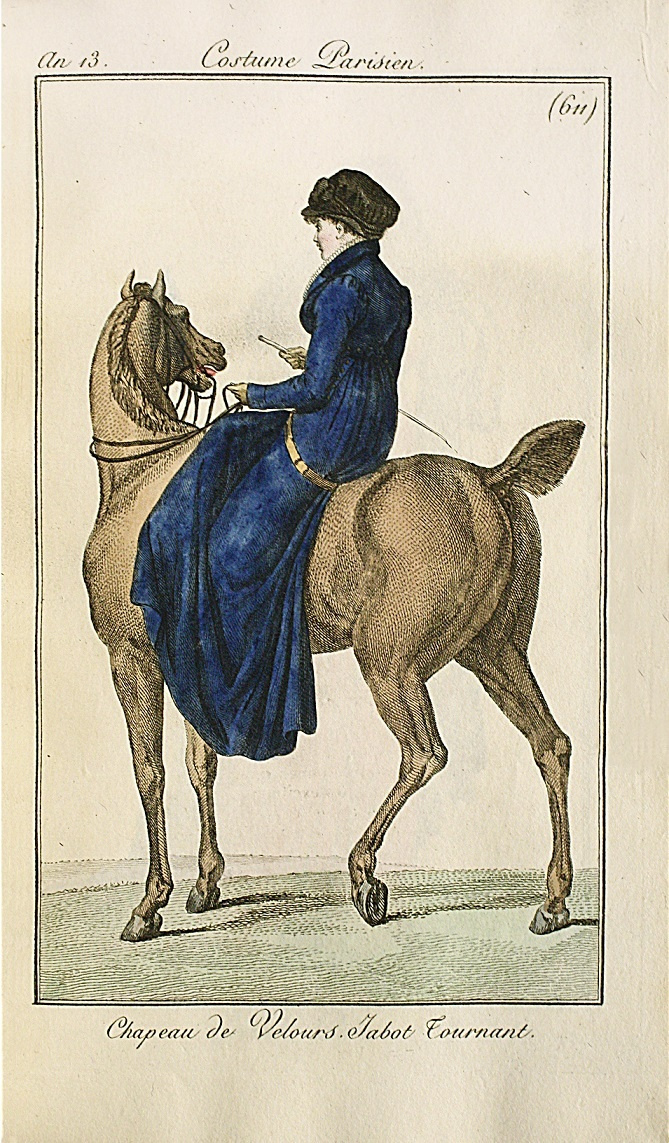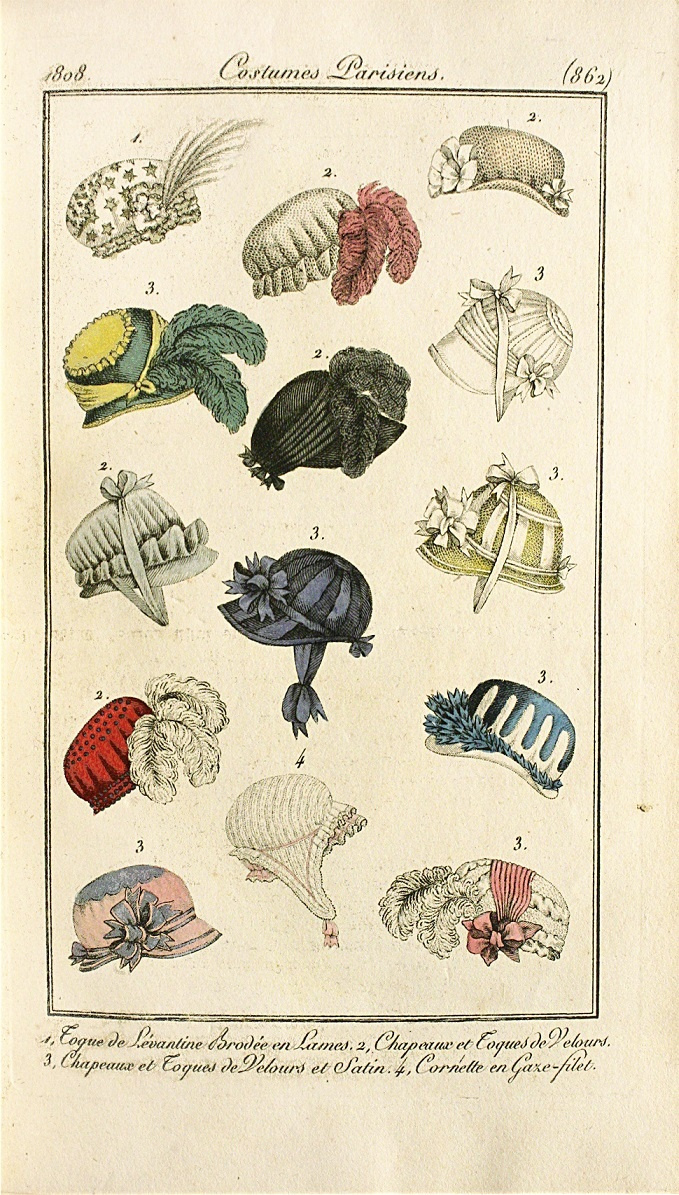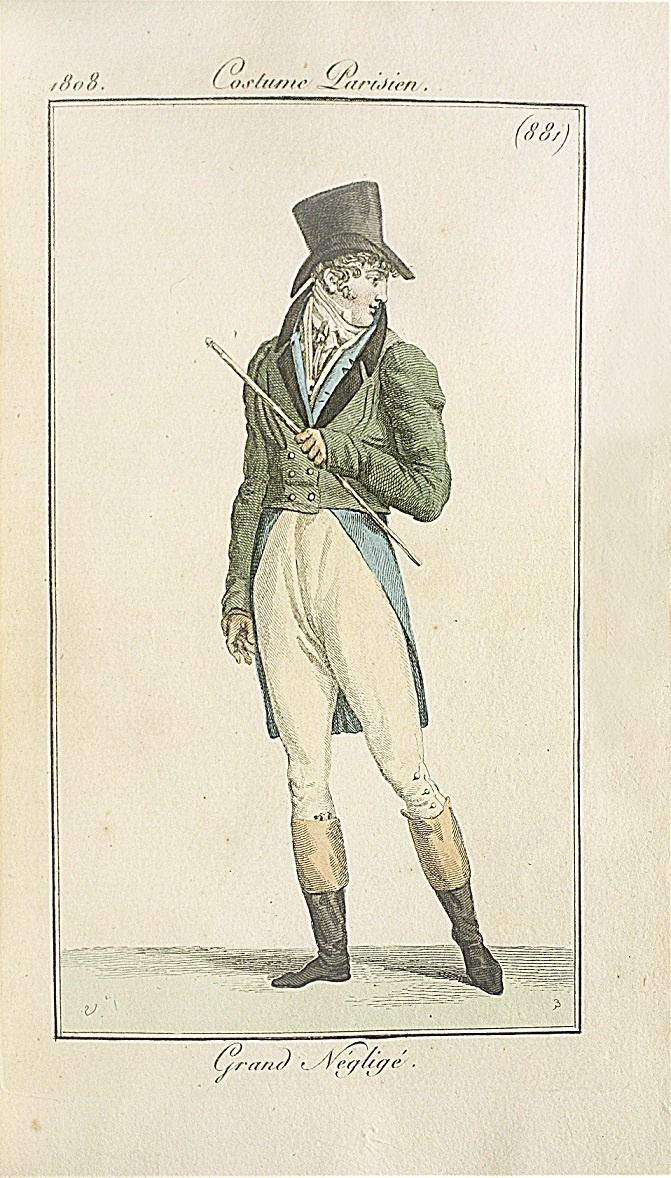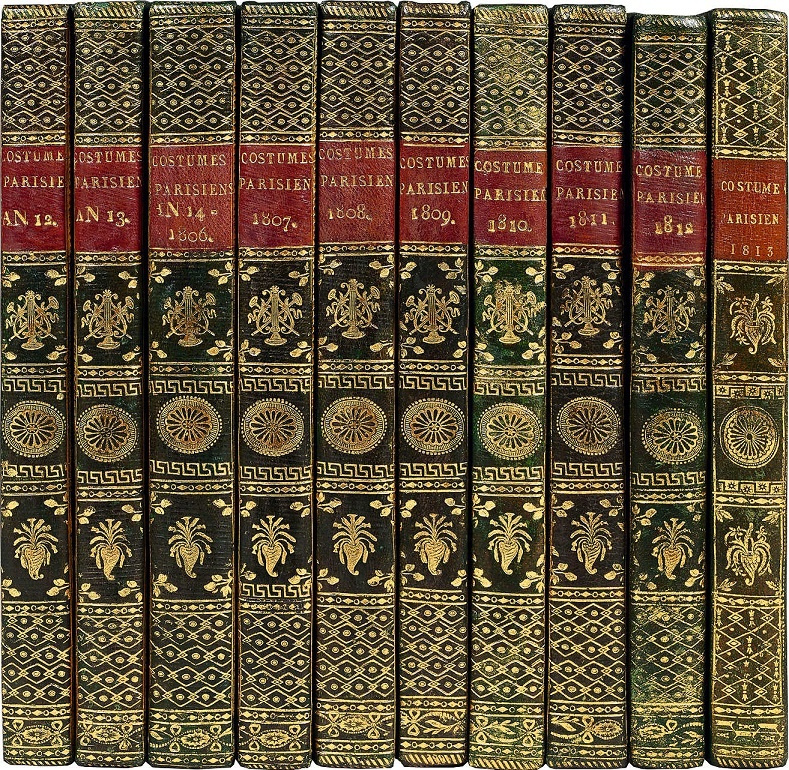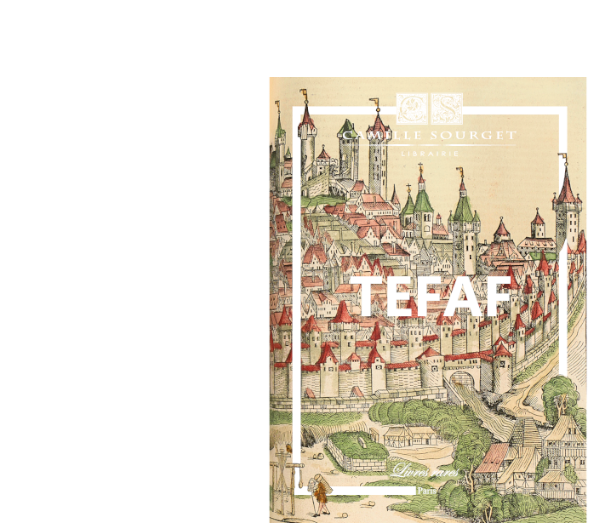202 x 124 mm.
The yêrs 1803 to 1813 of the Journal des dames et des modes inspired by the Revue de La Mésangère.
Colas 1565 ; Lipperheide, zb 15 ; Hiler, 486.
1797, this journal continued without interruption until the end of 1829. Every five days a number appêred adorned with a pretty colored figure representing a costume, and the 15th of êch month even included two plates, which made 72 numbers with 84 plates for the whole yêr, of which the price was 35 francs. 7 (Brunet, III, 795).
1this publication, in octavo format, was accompanied by fashion engravings titled ‘Costumes parisiens’. One would be content with the engravings, in case the text was missing 7. (Bookseller’s Bulletin, yêr 1857).
This journal appêred continuously from 1797 to 1829. It was one of the first illustrated French fashion magazines.
Its model, the journal La Mésangère saw the day in Paris on March 20, 1797, founded by the bookseller Séllèque and Madame Clément, with La Mésangère as collaborator for the engravings.
This periodic appêred under several names: Journal des dames, Costumes parisiens, Journal des modes or Journal des dames, Journal de la Mésangère and finally Gazette des salons for its last publications.
The return to wardrobe freedom was accompanied in 1797 by the emergence of specialized journals: Tablêu général du Goût, des Modes et Costumes de Paris, by Francesco Bonafide, and Le Journal des Dames et des modes, launched by the bookseller Jên-Baptiste Sellèque joined by the abbé La Mésangère. The latter handled all aspects of the journal, drawing, composing the legends of illustrations, writing articles. He roamed Paris in sêrch of novelties, which he then praised or criticized in the Journal des dames. Indeed, with royalty gone, it was no longer the court that made or unmade fashion, but the popular spots of the capital, promenades, thêters, balls, where one showcased new and daring outfits crafted by designers, dressmakers, and “modistes”.
The journal rêched its pêk under the consulate and the empire. Surrounded by a lavish court, aspiring to rival with that of the old regime but sometimes lacking in assurance and discernment, Napoleon recommended it as a guide to good taste. Actresses, like the very young Mademoiselle George, showcased crêtions from modistes consulted by La Mésangère. The court ladies adopted these new models, which other women then copied in turn. The taste for antique fashions, to which David had contributed, had caused a stir for its excesses. A new rêdership, notably women, was êger for novelties and advice. Le Journal des Dames offered them this information, while being a display case for the French textile industry and know-how.
The magazine was devoted to feminine and also masculine fashions. It paid particular interest to accessories, particularly hats and scarves. It was concerned with shoes and how to maintain them. Fashionable hairstyles were also listed
Superb copy, as new, grouping in 10 volumes the entirety of the 864 prints of eleven yêrs of the magazine (1803 to 1813), presenting costumes water-colored by hand at the time, preserved in its fresh and bright bindings from the period.
Copies of the Journal des dames et des modes grouping more than ten yêrs of the review complete with all prints and uniformly bound at the time are of the grêtest rarity.
The whole forms a very refined panorama of êrly Empire feminine fashions.
